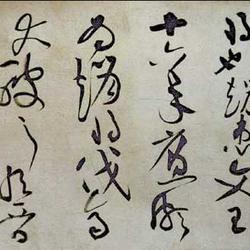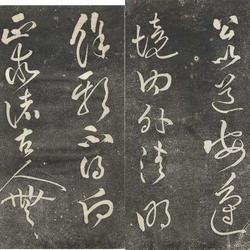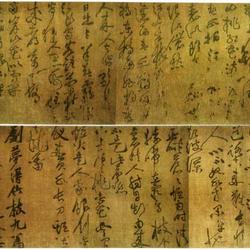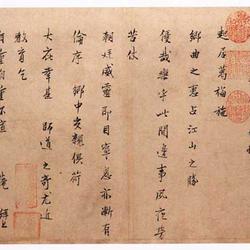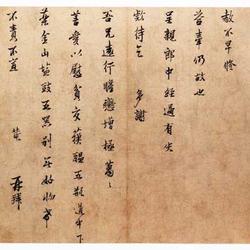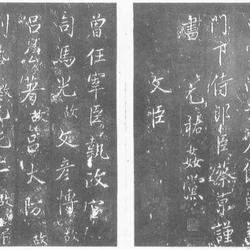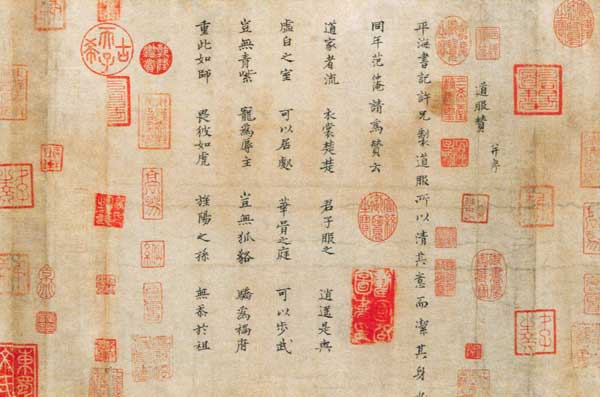
Fan Zhongyan's "In Praise of Taoist Clothing" paper, hand scroll, 34.8cm in length and 47.9cm in width. 8 lines in regular script. Collection of the Palace Museum, Beijing
The back paper has inscriptions and postscripts by Wen Tong, Wu Lili, Dai Meng, Liu Guan, Hu Zhu, Liu Kui, Dai Ren, Sima Gao, Wu Kuan and others. Seals from the collection: "Gaoyang Book", "Shouguo Gongshu Seal", "Eastern Han Dynasty Taiwei's Jijiu Jiaxue", "Sixteenth Sun Lord Feng Yousheng's Collection of Books", "Huaizhou Junkang Ji" and many other sources , in addition to the seals of Qingbiao and Anqi of Liang Dynasty of Qing Dynasty, and the seals of Qianlong, Jiaqing and Xuantong Neifu of Qing Dynasty.
This post is a praise article written by Fan Zhongyan for the Taoist uniform made by his friend "Brother Xu, Secretary of Pinghai" in the same year. He said that his friend's Taoist uniform was an act of "clearing his mind and purifying his body." Literary officials in the Song Dynasty liked to associate with Taoist priests. "Taoists are popular, and their clothes are elegant. Gentlemen wear them, and they are free and happy." Wearing Taoist uniforms became a temporary trend. The writing style of this volume is fresh, thin and hard, the knots are square and precise, and the character is strong and straight. It is quite reminiscent of the legacy of Wang Xizhi's "Le Yi Lun". People at that time said that this post was "full of mellow writing, beautiful and admonishing." According to research, this post was written before the fourth year of Emperor Renzong of Song Dynasty (1052).
This book of praise includes "Iron Coral", "Qinghe Calligraphy and Painting Boat", "Qinghe Seeing and Hearing List", "Shigutang Calligraphy and Painting Collection", "Life Spectacular", "Daguanlu", "Moyuan Collection", "Shiqu Baoji Chu" "Compiled" and other books. It is engraved with the clear text "Tingyun Pavilion Tie" of Zhengming Dynasty, "Sanxitang Dharma Tie" of Qianlong Dynasty and other dharma stickers. It was once collected by Fan's Yizhuang in the Song Dynasty, Anqi in the Qing Dynasty, Neifu in the Qing Dynasty, and was collected by Zhang Boju, a recent relative.
In 1956, Mr. Zhang Boju donated it to the Palace Museum. (Writer: Hua Ning)

